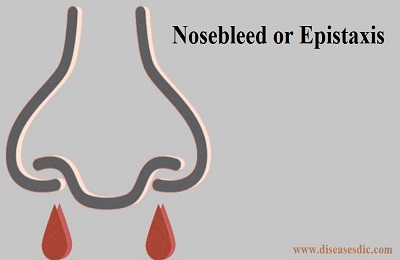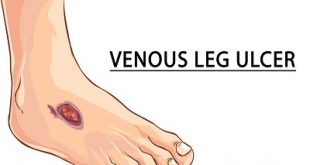Introduction
Von Willebrand Disease is a blood clotting disorder transmitted genetically which affect in both men and women. This disease is caused by the missing of Von Willebrand Factor (VWF) or by defective VWF. It is a protein responsible for clotting blood. VWF and Factor VIII (a key protein for clotting) helps to stick the platelets together to form a plug in the broken walls of the blood vessel. These factors seem to be missing in persons with VWD and they are very much prone to bleeding.
Normal blood clotting process
Blood clot during VWD
Types of Von Willebrand Disease
Von Willebrand Disease is classified into three types as follows.
Type 1: It is the mildest form of VWD having low levels of VWF in the blood. Individuals affected with this type have mild mucocutaneous bleeding.
Type 2: In this type, the clotting factors are at normal levels or in nearer to normal levels but doesn’t function well. Type 2 VWD can be subdivided into 3 types as follows.
- Type 2A VWD – The amount of VWF and factor VIII are in normal levels. In this type, the VWF doesn’t act as a binder to collect the platelets in the injury of the blood vessel.
- Type 2B VWD – It is the most common type occurs in VWD patients. Here VWF collects the platelets in the bloodstream instead of forming a plug in the blood vessel injury.
- Type 2N VWD – this type is characterized by failure of VWF to transport factor VIII in the bloodstream. Type 2N VWD is similar to the mild form of hemophilia A.
Type 3: Type 3 VWD is very rare case. In this type, the levels of VWF are very low and therefore VWF, which carries factor VIII also very low in the bloodstream. Because of this bleeding can happen frequently.
Historical information
- In 1920, Finnish physician Erik von Willebrand was first described Von Willebrand Disease and so it is named after him.
- In 1950’s he became clear with the causes of VWD that a “plasma factor”, antihemophilic factor (FVIII), was decreased in VWD patients. Since this period the factors responsible for VWD is called as “von Willebrand factor”.
- At last, in 1980’s, studies on molecular and genetics of VWD distinguished hemophilia A and VWD more absolutely.
Epidemiology
Von Willebrand sickness (VWD) happens with the same frequency among men and women, affecting up to at least one% of the overall populace. However, women are more likely to sense signs and symptoms and symptoms of VWD because of the expanded bleeding it reasons during their menstrual durations, in the course of pregnancy, and after childbirth.
Between 2012 and 2016, greater than 14,600 600 men, women, and children have been visible at hemophilia remedy facilities for remedy of VWD. About 2/3 had been women and ladies.
Causes of Von Willebrand Disease
- VWD is a genetic disorder. If a parent with VWD due to gene mutation, 50% of chances is there to pass it to their offspring.
- In some cases, gene mutation occurs without any reasons called as a new mutation in VWF and factor VIII.
- The VWF gene is the only gene responsible for VWF.
- A mutation in the VWF gene causes lower levels of VWF in the bloodstream, thereby decrease in the factor VIII happens.
- In many cases, VWD type 1 is considered as a complex genetic disorder in which both genetic and environmental factors play a role in the occurrence of VWD.
- Type 2 VWD also an inherited disorder.
- Few people can get VWD because of their mislead lifestyles such as using alcohol, tobacco, and drug addict. Also, other medical condition can lead to VWD. This type of VWD is called as an acquired von Willebrand syndrome.
- Generally, these von Willebrand factor is active if any pressure and stress are applied to them. Thus a person with heavy stress and pressure also a reason behind the development of VWD.
Causes of Von Willebrand Disease.
Risk factors
- The major risk of having VWD is family history.
- In most cases, VWD are autosomal dominant inherited
- More severe cases of VWD are type 3 can be due to the autosomal recessive, which means both the parents have VWD in earlier and passed to their offspring.
- Hypertension is also a major risk of getting VWD.
Symptoms of Von Willebrand Disease
The symptoms of Von Willebrand disease may arise at any age. Some people may not find the symptoms because the signs are mild or absent. The common sign is abnormal bleeding. The severity of the bleeding varies from person to person.
The main common symptoms are as follows
- Bleeding from nose frequently or long last
- Easy bruising or lumpy bruising occurs in any part of the body
- Blood comes in urine or stool
- Heavy or long lasting bleeding from cut wounds
- Long lasting bleeding after tooth removal or surgery
- Heavy menstrual period flow for a long time or after labour
- Bleeding gums
Bruising
Bleeding gums
Complications of Von Willebrand Disease
Complications of VWD include:
Swelling and pain: If the bleeding occurs in the joints and soft tissues, swelling and pain can be the result.
Anaemia: The women who are in heavy bleeding during menstrual cycle can develop iron deficiency d such as anaemia.
Death from bleeding: in rare case some person may have uncontrolled bleeding this may lead to life threatening and needs emergency medical conditions.
Diagnosis and test
Sometimes it’s very hard to diagnose. Type 1 and type 2 VWD may not have major bleeding problems. Thus, they may not be diagnosed unless they have heavy bleeding after surgery or some other trauma.
The other one type 3 may have major bleeding. It’s mainly occurs in infants and children, it can be diagnosed during the first year of life.
Medical history:
Your doctor may ask about your medical history and your family history. He or she may ask about:
- A bleeding from small wound that lasted for more than 10 minutes or it started up again during the first seven days of injury
- Any prolonged bleeding that required medical care after any surgery or dental extractions
- Any blood in your stool or in urine
- The history of muscle, joint bleeding
- Menstrual bleeding history in women’s
- Any medicines taken that cause bleeding or increase the risk of bleeding such as aspirin and other nonsteroidal anti-inflammatory drugs (NSAIDs), clopidogrel, warfarin, or heparin.
Physical examination:
Your doctor will undergo physical examination to see some unusual bruising or other signs of blood cut bleeding recently.
Blood tests:
Von Willebrand factor antigen: this test is to investigate the level of VWD factor in the blood by measuring the particular protein.
Ristocetin cofactor activity: Ristocetin is the antibiotic which is used in the text. This will check the VWD how well it works in the clotting process.
Factor VIII clotting activity: This test is checks the abnormality level and activity of factor VIII.
Von Willebrand factor multimers: This test is to identify the type of VWD you have. This test evaluates the specific structure of Von Willebrand factor in the blood and its protein complexes and how it breaks down.
Platelets function test: this test is to measure the functions of platelets.
Treatment and medications
Apply pressure on wound or on cut may all you need to do to prevent bleeding.
Medicines to stop bleeding such as follows:
Desmopressin – available as a nasal spray or injection
Tranexamic acid – available as tablets, a mouthwash or an injection
Von Willebrand factor concentrate – available as an injection
Drugs applied to cuts – A fibrin sealant (Tisseel VHSD) placed directly on a cut helps curtail bleeding. These substances are applied like a glue using syringes.
People with severe bleeding may need to take routinely to prevent serious bleeding. This medicine can be taken before starting operation to reduce the risk of serious bleeding.
Treatment for heavy menstrual bleeding:
To treat heavy menstural bleeding for women’s, medications used to control bleeding such as follows:
- The oral contraceptive pill
- The intrauterine system (IUS)
- Tranexamic acid tablets
- Desmopressin nasal spray
- In severe cases, von Willebrand factor concentrate
Lifestyle and home remedies:
Switch pain relievers: Before taking medications you have to consult a doctor to prevent side effects. Blood-thinning medications such as aspirin, ibuprofen (Advil, Motrin IB, others) or naproxen (Aleve, Anaprox).
Tell your doctors and dentist: Before doing surgery or dental extractions, you have to let your doctor to know about your von Willebrand disease. And also let the doctor know about your family history of von Willebrand disease..
Consider wearing a medical ID bracelet: Make sure it notes that you have von Willebrand disease, which will be helpful to medical personnel if you’re ever in an accident or taken to an emergency room. Also carry a medical alert card in your wallet.
Be active and safe: Exercise as part of attaining or maintaining a healthy weight. Avoid activities that could cause bruising, such as football, wrestling and hockey.
 Diseases Treatments Dictionary This is complete solution to read all diseases treatments Which covers Prevention, Causes, Symptoms, Medical Terms, Drugs, Prescription, Natural Remedies with cures and Treatments. Most of the common diseases were listed in names, split with categories.
Diseases Treatments Dictionary This is complete solution to read all diseases treatments Which covers Prevention, Causes, Symptoms, Medical Terms, Drugs, Prescription, Natural Remedies with cures and Treatments. Most of the common diseases were listed in names, split with categories.







